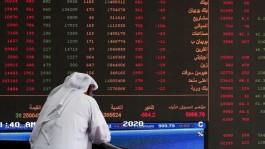Oil prices held near November lows, with focus on the demand outlook after OPEC cut its estimates again due to a slowing economy in China.
West Texas Intermediate crude was trading near $68 a barrel, after ending Tuesday unchanged, while Brent crude closed below $72. OPEC cut its demand growth forecast for the fourth straight month, but remained more optimistic than other market watchers, with many analysts warning of a supply surplus next year.
Crude has been trading in a tight range, with supply and demand relatively close since the middle of last month, as traders monitored consumption trends in China, tensions in the Middle East and the fallout from Donald Trump’s re-election to the US presidency. After OPEC’s monthly report, the US will release its short-term economic outlook later on Wednesday, followed by the International Energy Agency’s forecast on Thursday.
Reflecting the bearish outlook, time spreads for oil futures have narrowed in recent sessions. Although they remain in backwardation, where near-term contracts have a higher premium than long-term contracts, the gap has narrowed. Most notably, the spot spread for West Texas Intermediate crude futures fell to its lowest level since February this week.
large surplus in supply
Morgan Stanley analysts, including Martijn Rats, said in a report: The oil market appears to be on track for a significant surplus in 2025, as a result of slowing oil demand growth, continued strong non-OPEC supply growth, and OPEC’s ambition to start increasing supplies as well.
The bank cut its forecast for Brent crude prices, with the forecast for the first quarter of 2025 reduced by $5.50 to $72 per barrel.









































